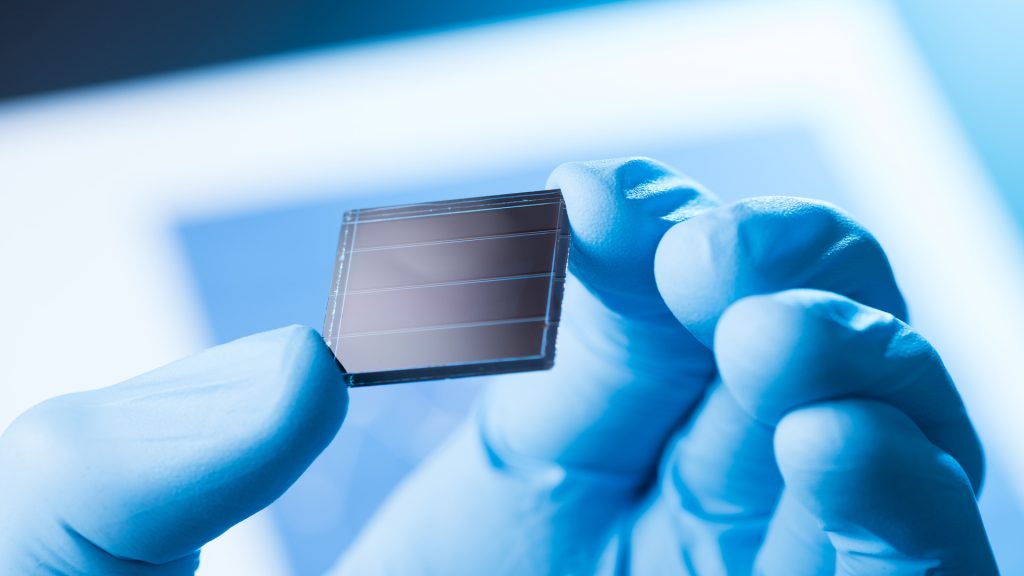Researchers at the University of Kansas have made a breakthrough in the understanding of organic semiconductors, pointing to the possibility of more efficient and versatile solar cells.
For many years, silicon has dominated the solar energy sector. Its efficiency and durability have made it the go-to material for photovoltaic panels. However, silicon-based solar cells are rigid and expensive to manufacture, limiting their application on curved surfaces.
These carbon-based materials, which are organic semiconductors, offer a viable alternative that is low-cost and flexible. “These materials have the potential to lower the manufacturing costs of solar panels because they can be coated on any surface using solution-based methods, similar to how you would paint a wall,” explains Wai-Lung Chang, associate professor of physics and astronomy at the University of Kansas.
But these organic semiconductors aren’t just about reducing costs. They boast the ability to be tuned to absorb specific wavelengths of light, opening up countless new possibilities. “These properties make organic solar panels particularly well suited for use in the next generation of green and sustainable buildings,” Chang notes. Imagine transparent and colored solar panels seamlessly integrated into architectural designs.
Despite these advantages, organic solar cells have struggled to catch up with the efficiency of their silicon counterparts: While silicon panels can convert up to 25% of sunlight into electricity, organic cells are typically around 12% efficient, and this gap has proven a major obstacle to widespread adoption.
Unleash efficiency
Recent developments have rekindled interest in organic semiconductors: a new class of materials called non-fullerene acceptors (NFAs) has helped organic solar cells approach efficiencies of 20%, narrowing the gap with silicon.
The Kansas State research team set out to understand why NFAs perform better than other organic semiconductors, and their research led to a surprising discovery: Under certain circumstances, excited electrons in NFAs can gain energy from their surroundings rather than losing it.
The discovery goes against conventional wisdom: “This observation is counterintuitive because excited electrons normally lose energy to their environment, much like a hot coffee cup loses heat to its surroundings,” Chang explained.
The team, led by graduate student Khushal Rijal, performed their experiments using an advanced technique called time-resolved two-photon photoemission spectroscopy, which allowed them to track the energy of excited electrons down to within trillionths of a second.
An unexpected ally
The researchers say this unusual increase in energy is due to quantum mechanics. thermodynamicsAt the quantum level, an excited electron can appear to reside on several molecules simultaneously.
Combined with the second law of thermodynamics, this quantum behavior reverses the direction of heat flow.
“For organic molecules arranged in certain nanoscale structures, the typical direction of heat flow is reversed, increasing the overall entropy,” Rijal explained in a press release. “This reversed heat flow allows neutral excitons to gain heat from the environment and dissociate into pairs of positive and negative charges. These free charges can, in turn, generate an electric current.”
Beyond solar cells
Beyond improving solar cells, the team believes their findings could also be applied to other areas of renewable energy research, as the mechanism they uncovered could lead to the development of more efficient photocatalysts for converting carbon dioxide into organic fuels.
“Despite being a well-known concept in physics and chemistry, entropy has rarely been actively exploited to improve the performance of energy conversion devices,” Rijal emphasized.
The team’s findings were published in the journal Neurology. Advanced Materials.
About the Editor
Amar Joss Chacko A typical work day involves writing code, taking photos of cool buildings, and dreaming of reading a book by the fire. He loves all things technology, electronics, photography, cars, chess, football, and F1.


